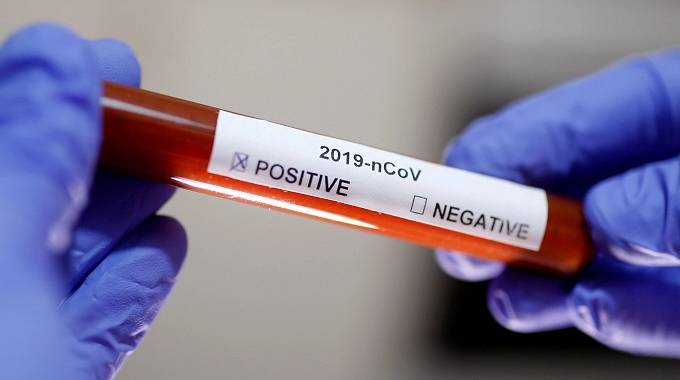Dealing with Covid-19 stigma

Dr Tatenda Simango
I hope I find you well and in good spirits. We have had a disturbing increase of cases, mainly driven by returning citizens from our neighboring countries. What has been even more alarming is the number of people who are under quarantine and isolation that are escaping without a trace to mingle with the public.
This may be attributed to the escapees’ poor understanding of the risk they pose to the general population and their poor understanding of the condition itself. The situation is not made any better by the below standard living conditions at some quarantine centres.
Stigma may also be a contributing factor to the absconding that is occurring due to poor information dissemination on our part as health care workers.
In this week’s article, we look to understand the stigma associated with having Covid-19 and how best we can mitigate it. Stigma most often refers to a set of negative and often unfair beliefs that a society or group of people have about something.
Around the world, there have been reports of individuals being subjected to verbal or even physical abuse as their ethnicity was unfairly associated with the virus.
Some groups of people experiencing stigma in our communities include Asians, Caucasians, travellers from South Africa (injiva), people from quarantine centres as well as people staying in urban areas (from rural folk). What is also interesting but unfortunate is the trend nowadays portrayed by the common person that every deceased person is assumed to have died of Covid-19 regardless of actual cause of death. Stigma affects the mental health of the stigmatised group.
When I was on night duty at a local Government hospital recently, I was informed of a suspected case of Covid-19. At that point we had about five patients in casualty suffering from various conditions and about 10 relatives accompanying the five patients. The nurses advised that they had put the suspected case in a separate area from the other unsuspecting people in casualty.
I was asked to see all other patients and attended to the suspected case last. All relatives were asked to leave casualty for their own safety. Having seen all five patients, I started preparing to see the Covid-19 suspected case. Preparation involves donning (wearing the appropriate protective gear) and washing of hands. I was then advised the patient had vanished into thin air and was nowhere to be found. There was no trace or record of their name or contact details.
I went home and could not share the matter with my wife. I took all the necessary precautions thereafter and have since had a negative test for coronavirus following the incident. Analysing the situation, I realised the mistakes that may have led to the loss to management of the patient include but are not limited to the following;
Poor data capturing
Poor reception of suspect cases
Misunderstanding of information and protocol by the patient
Stigma on the part of the patient and staff including myself
Poor quarantine set-up, housing, sanitary and poor food supply
This was an embarrassing moment, but we need to learn from it to prevent further cases from escaping. This only means that the quarantine centres have worse cases of stigma and furthermore, these people will have a difficult time reintegrating into society.
We shall revisit the facts on Covid-19 and its risk factors as we discussed in our previous articles of the pandemic. Knowledge helps cure stigma. Human coronaviruses are responsible for common cold and croup (infection of the upper airway and causes a characteristic barking cough). According to Yuki, K. et al (2020), in their review article Covid-19 Pathophysiology, they state that the average time it takes to develop symptoms of Covid-19 was 5 days. The combined case-fatality rate (ratio between confirmed deaths and confirmed cases) was 2,3 percent. The older aged, developed some of the serious blood clots in the chest and the presence of coronary artery disease.
Diabetes and hypertension are also considered to be risk factors for complicated case of Covid-19. Italy was affected mostly because 23 percent of the population was aged 65 years or older. Most infected persons without the above risk factor had mild to moderate disease.
How to counter stigma, adapted from Center for Disease Control (CDC) guidelines;
Maintain privacy and confidentiality of those seeking healthcare and those who may be part of any contact investigation.
Quickly communicate the risk or lack of risk from associations with products, people, and places.
Raise awareness about Covid-19 without increasing fear.
Share accurate information about how the virus spreads.
Speak out against negative behaviours, including negative statements on social media about groups of people, or exclusion of people who pose no risk from regular activities.
Be cautious about the images that are shared. Make sure they do not reinforce stereotypes.
Engage with stigmatised groups in person and through media channels including news media and social media.
Thank healthcare workers and responders.
Share the need for social support for people who have returned from China and other countries around the world too because the effects were devastating across the globe. Moreover, China has fought and won the battle.
Words matter and using language that perpetuates existing stereotypes can drive people away from getting tested and taking the actions they need to protect themselves and their communities.
The long queues for basic commodities (Zupco/supermarkets/banks) need urgent attention because of the risk they pose in increasing the spread of Covid-19. If we are not responsible, the lockdown will keep being extended and more-so our livelihoods will be threatened. We are just winning the fight against HIV/Aids stigma, we can adopt the same mindset in the fight against Covid-19 stigma.
Till next week, let us not lose the battle to Covid-19 at such a critical time due to societal misconceptions.
Dr Tatenda Simango can be contacted on [email protected] or follow him on his Facebook Page 9th Avenue Surgery.









Comments